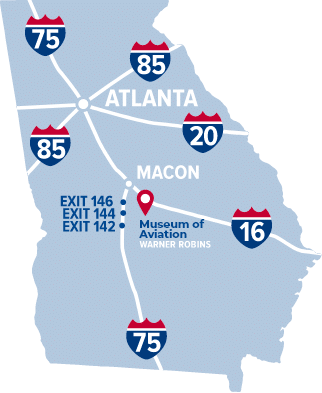In the mid-1960s, capitalizing on the proven design of their subsonic Firebee I remotely piloted vehicle (RPV), Ryan developed a supersonic version which the Navy and Air Force could train and test new weapon systems. The Air Force ordered 99 BQM-34Fs and, by February 1974, had started using them. The BQM-34F was rocket-boosted from a short rail ground launcher or dropped from a DC-130E aircraft modified to carry up to four RPVs. They were normally recovered with the Mid-Air Retrieval System (MARS), which included a specially equipped helicopter that “snatched” the target while it descended under its 80 ft diameter parachute. If the BQM-34 landed in water, it could float for several hours until it was recovered. The BQM-34F carried an assortment of electronic devices to enhance its radar image, permit flying as low as 50 feet, control it from 200 miles away, “score” the missiles fired at it, and telemeter information to and from it during flight.
Warner Robins Air Logistics Center (WR-ALC) is responsible for RPV programs for the USAF including the BQM-34F. The BQM-34F on display was delivered to the USAF in November 1972 and stored at WR-ALC until January 1973. It was last assigned to the 47th Weapons Evaluation Group, Tyndall AFB, Florida before being sent to the Museum for display in 1986.








